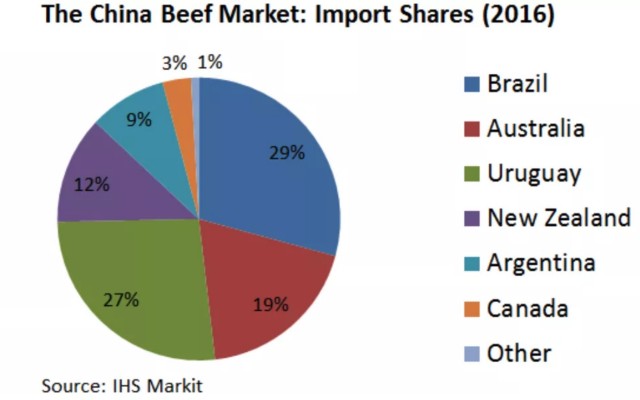English-Français
អន្តរជាតិ

Image: REUTERS/ Paulo Whitaker
×![]()
ដោយ: ថ្មីៗ
The article provided by World Economic Forum
Imagine if a city like Chicago were to disappear in a single year. Well, this is happening now with our forests. Every year, the world loses a forest area similar to the size of this major US city. But, let’s be honest, for many of us who live in cities, the steady supply of coffee, oil, and WiFi are more pressing concerns.
According to the most recent State of the World's Forests report by the United Nations Food and Agriculture Organization (FAO), 5.2 million hectares of forests have been lost in each of the last 25 years, between 1990 and 2015.
While the situation is dire, we still have forests left that allow us to continue extracting wood, energy, and non-timber products.
These causes of deforestation are well known to governments, NGOs and international institutions such as the United Nations and the European Union. They have been trying to stop deforestation since 1990. But our efforts have been met with limited success so far.
Agriculture is one of the main causes of deforestation. Commercial agriculture for products such as meat, palm oil, rubber, soy, cocoa, livestock, timber and fuel wood, are increasingly encroaching on forest lands.
For instance, China’s increased consumption of beef can be tied to forest loss in Brazil. Between 2011 to 2016, China’s consumption of beef rose by 20%. Brazil is the main provider of that beef, 29%, and that demand has resulted in the loss of nearly 6,000 square kilometers of tropical forest in the country.

A key cause of global forest loss is the emergence of a global middle class – a good thing – but one that wants to eat steak, own cars and consume just like the middle class in high-income countries. That is a problem.
A banana produced in Ecuador can land in the home of a family in New York in less than a week. An orange grown in Israel is transformed into juice in three days, ready for breakfast in France.
The demands of a growing population require ever more fertile soil and space, to accommodate urbanization, a cycle that leads to even less forest cover.
The World Wildlife Fund announced last year that by 2 August, we had consumed all the resources that we did in all of 2016. The term for this is ‘Earth over-shoot’. We are consuming our way through the world.
The world adopted the Sustainable Development Goals to tackle the major challenges facing humanity, including climate change. Goal 15 commits us to fight against deforestation and land degradation. Since 1992 – and every year just before Christmas – world leaders meet at the Conference of Parties (COP) to discuss solutions to climate change, and forests are part of those discussions.
Those COPs – conducted by the United Nations Framework Convention on Climate Change – end each year with decisions and agreements, and new approaches such as Reducing Emissions from Deforestation and Forest Degradation (REDD+) to tackle deforestation. Other initiatives like Forest Law Enforcement, Governance and Trade (FLEGT) promote legal timber trades. Those initiatives are part of the different mechanisms designed, validated, and adopted by the international community, every year.
Most of these decisions are difficult and expensive to implement for governments that have weak regulations for forest protection and limited coordination with other economic sectors. For instance, it took five years for 56 developing countries to ready themselves to implement REDD+ policies and measures. And it will likely take another five years to start implementing those measures.
On the other hand, illegal logging continues without pause. An illegal logger in Brazil can deforest an area the size of a football field in a matter of hours. Others invade protected areas, in the span of days, to cultivate, for example, cocoa in Cote d’Ivoire, or cashew in Cambodia.
Multinational companies hungry for green commodities are trooping into tropical forests in developing countries, forcing them to sign unsustainable economic agreements. In exchange for helping develop industries, building roads, hydroelectric dams, energy networks, these multinationals seek natural resources such as oil, coal, and palm oil. The main supply is the forest, or the soil below the forest.
For now, we can still afford to lose forests; but not for long. If the trend continues, in the next decade we will have few forests left.
To prevent this, governments and the private sector need to act now.
Action is needed to regulate land-use change, by implementing land-management plans. This would be a good start to putting “the planet on a more prosperous and sustainable development path”. And the world will be a much better place for it.
Nick Beresford, United Nations Development Programme Country Director, Cambodia
Carlos A.R. Paramo, Forestry Expert with the United Nations Development Programme
Imagine if a city like Chicago were to disappear in a single year. Well, this is happening now with our forests. Every year, the world loses a forest area similar to the size of this major US city. But, let’s be honest, for many of us who live in cities, the steady supply of coffee, oil, and WiFi are more pressing concerns.
According to the most recent State of the World's Forests report by the United Nations Food and Agriculture Organization (FAO), 5.2 million hectares of forests have been lost in each of the last 25 years, between 1990 and 2015.
While the situation is dire, we still have forests left that allow us to continue extracting wood, energy, and non-timber products.
These causes of deforestation are well known to governments, NGOs and international institutions such as the United Nations and the European Union. They have been trying to stop deforestation since 1990. But our efforts have been met with limited success so far.
Agriculture is one of the main causes of deforestation. Commercial agriculture for products such as meat, palm oil, rubber, soy, cocoa, livestock, timber and fuel wood, are increasingly encroaching on forest lands.
For instance, China’s increased consumption of beef can be tied to forest loss in Brazil. Between 2011 to 2016, China’s consumption of beef rose by 20%. Brazil is the main provider of that beef, 29%, and that demand has resulted in the loss of nearly 6,000 square kilometers of tropical forest in the country.

A key cause of global forest loss is the emergence of a global middle class – a good thing – but one that wants to eat steak, own cars and consume just like the middle class in high-income countries. That is a problem.
A banana produced in Ecuador can land in the home of a family in New York in less than a week. An orange grown in Israel is transformed into juice in three days, ready for breakfast in France.
The demands of a growing population require ever more fertile soil and space, to accommodate urbanization, a cycle that leads to even less forest cover.
The World Wildlife Fund announced last year that by 2 August, we had consumed all the resources that we did in all of 2016. The term for this is ‘Earth over-shoot’. We are consuming our way through the world.
The world adopted the Sustainable Development Goals to tackle the major challenges facing humanity, including climate change. Goal 15 commits us to fight against deforestation and land degradation. Since 1992 – and every year just before Christmas – world leaders meet at the Conference of Parties (COP) to discuss solutions to climate change, and forests are part of those discussions.
Those COPs – conducted by the United Nations Framework Convention on Climate Change – end each year with decisions and agreements, and new approaches such as Reducing Emissions from Deforestation and Forest Degradation (REDD+) to tackle deforestation. Other initiatives like Forest Law Enforcement, Governance and Trade (FLEGT) promote legal timber trades. Those initiatives are part of the different mechanisms designed, validated, and adopted by the international community, every year.
Most of these decisions are difficult and expensive to implement for governments that have weak regulations for forest protection and limited coordination with other economic sectors. For instance, it took five years for 56 developing countries to ready themselves to implement REDD+ policies and measures. And it will likely take another five years to start implementing those measures.
On the other hand, illegal logging continues without pause. An illegal logger in Brazil can deforest an area the size of a football field in a matter of hours. Others invade protected areas, in the span of days, to cultivate, for example, cocoa in Cote d’Ivoire, or cashew in Cambodia.
Multinational companies hungry for green commodities are trooping into tropical forests in developing countries, forcing them to sign unsustainable economic agreements. In exchange for helping develop industries, building roads, hydroelectric dams, energy networks, these multinationals seek natural resources such as oil, coal, and palm oil. The main supply is the forest, or the soil below the forest.
For now, we can still afford to lose forests; but not for long. If the trend continues, in the next decade we will have few forests left.
To prevent this, governments and the private sector need to act now.
Action is needed to regulate land-use change, by implementing land-management plans. This would be a good start to putting “the planet on a more prosperous and sustainable development path”. And the world will be a much better place for it.
Nick Beresford, United Nations Development Programme Country Director, Cambodia
Carlos A.R. Paramo, Forestry Expert with the United Nations Development Programme
© រក្សាសិទ្ធិដោយ thmeythmey.com
«ប្រេសិត»មានន័យដូចម្តេច?
5 ថ្ងៃ






















